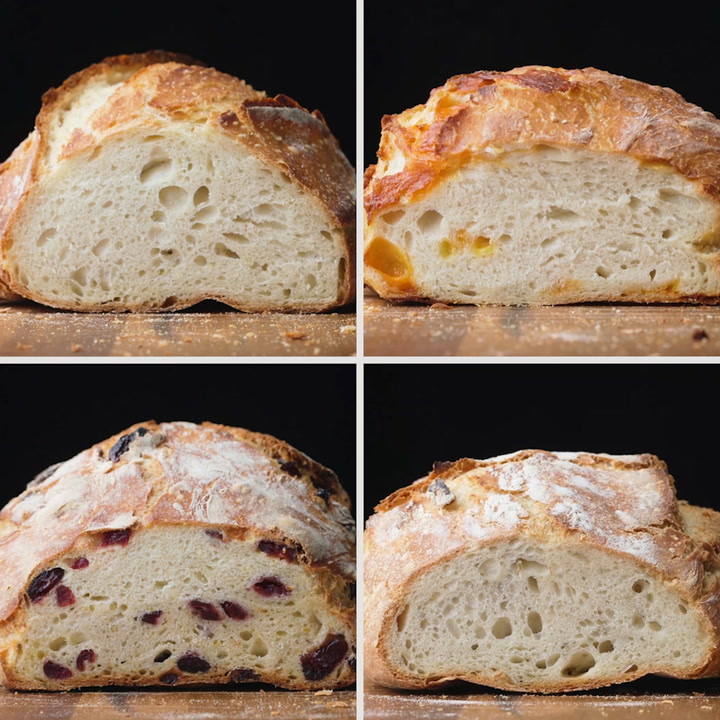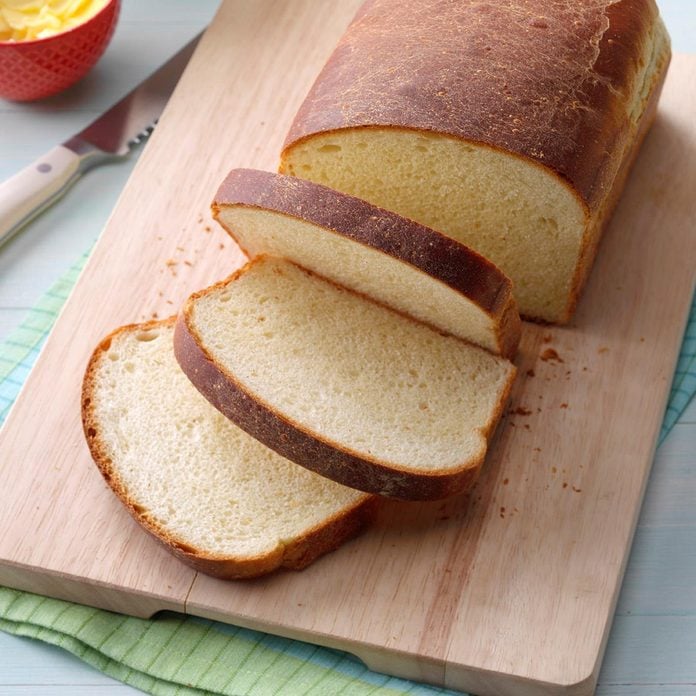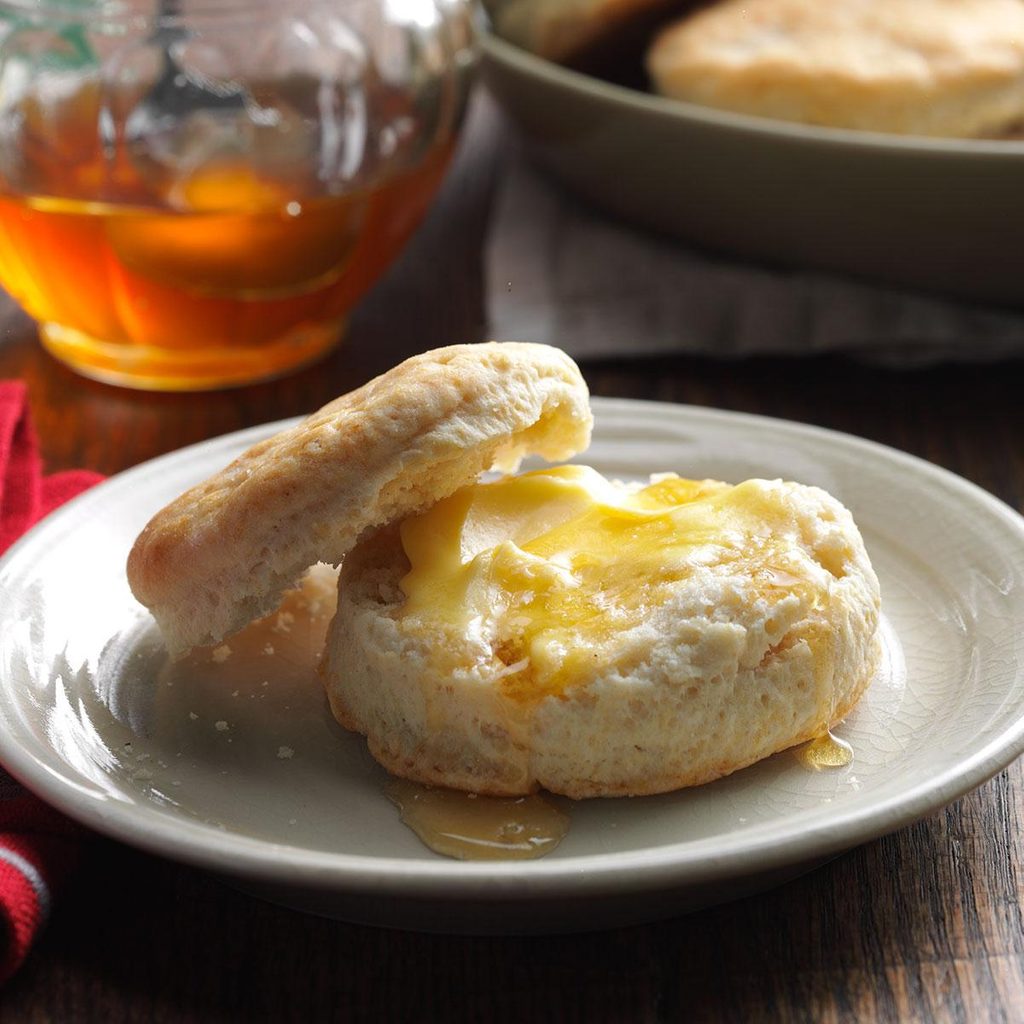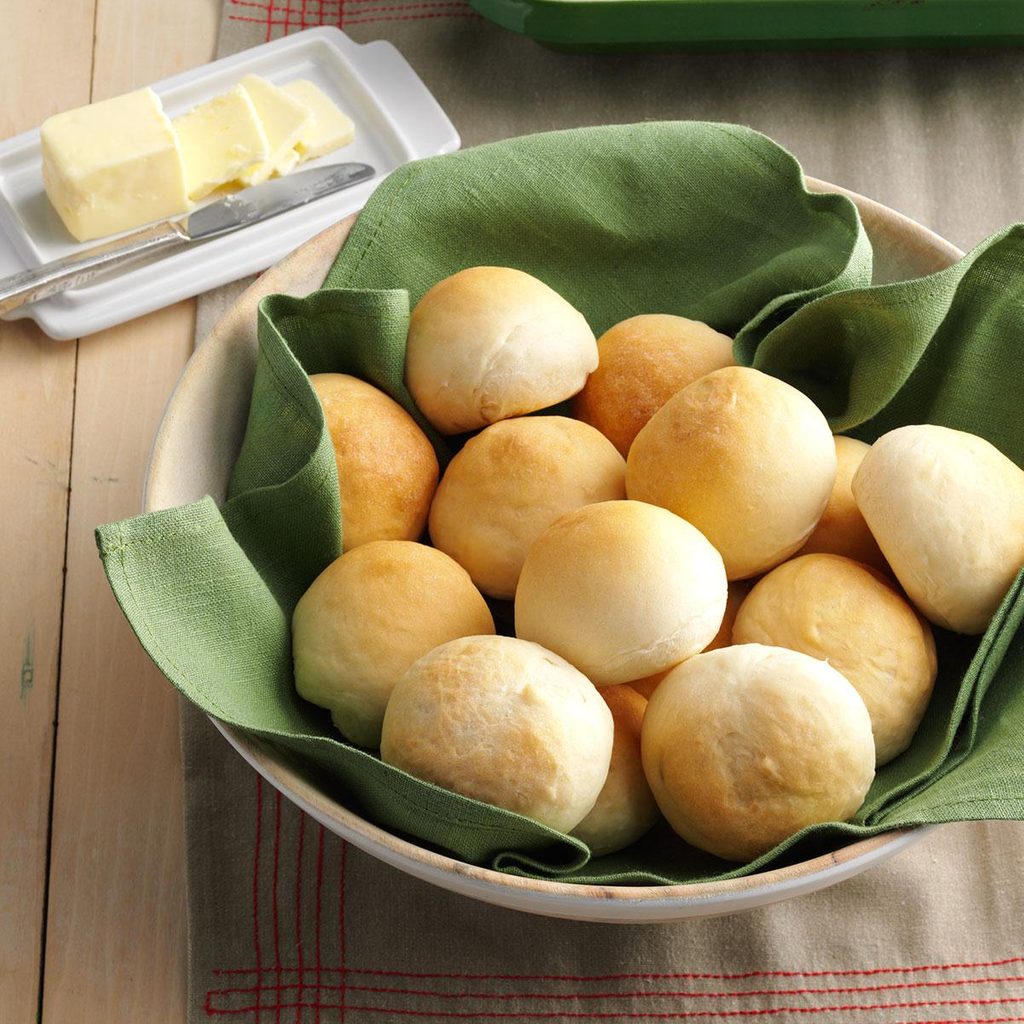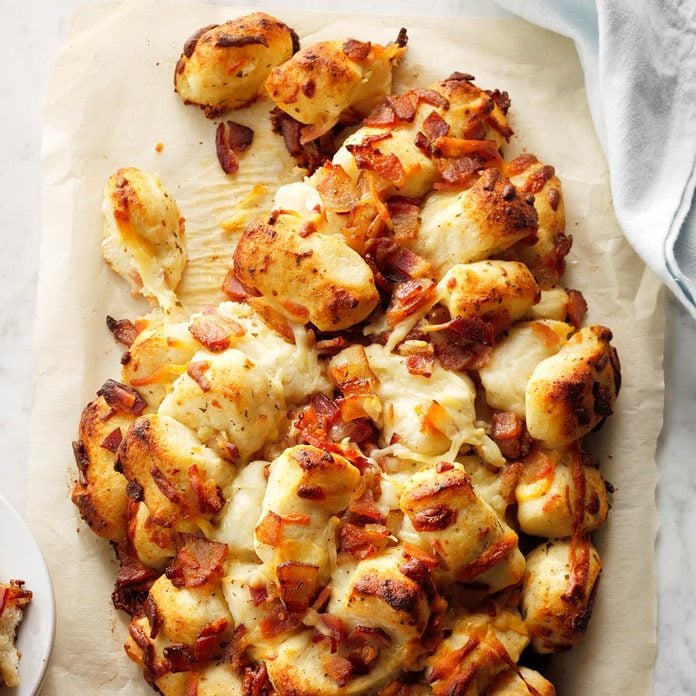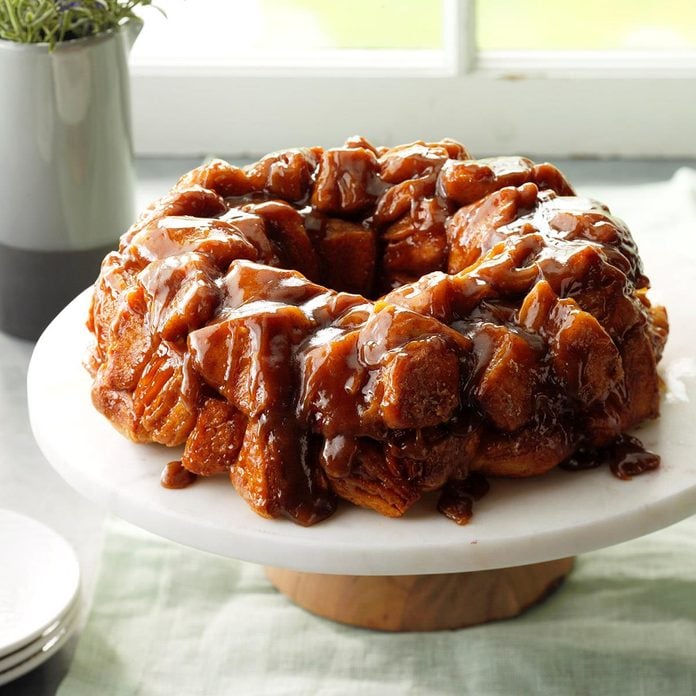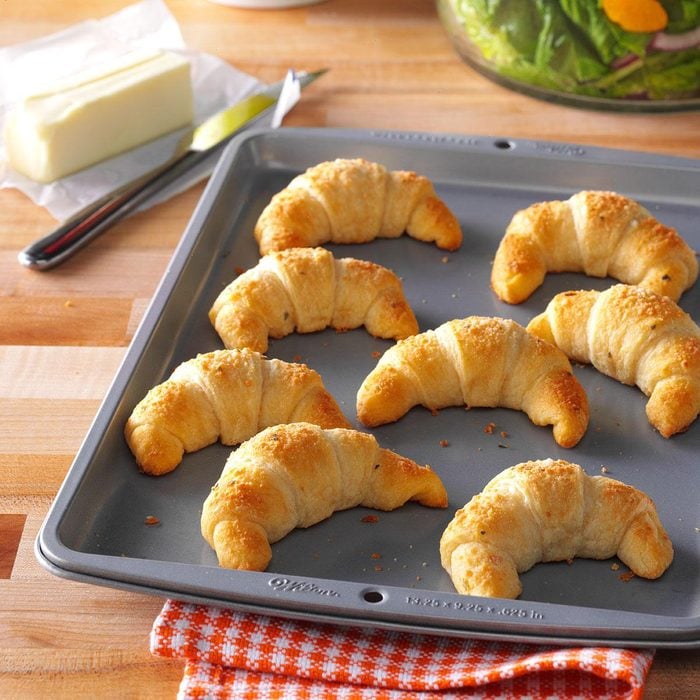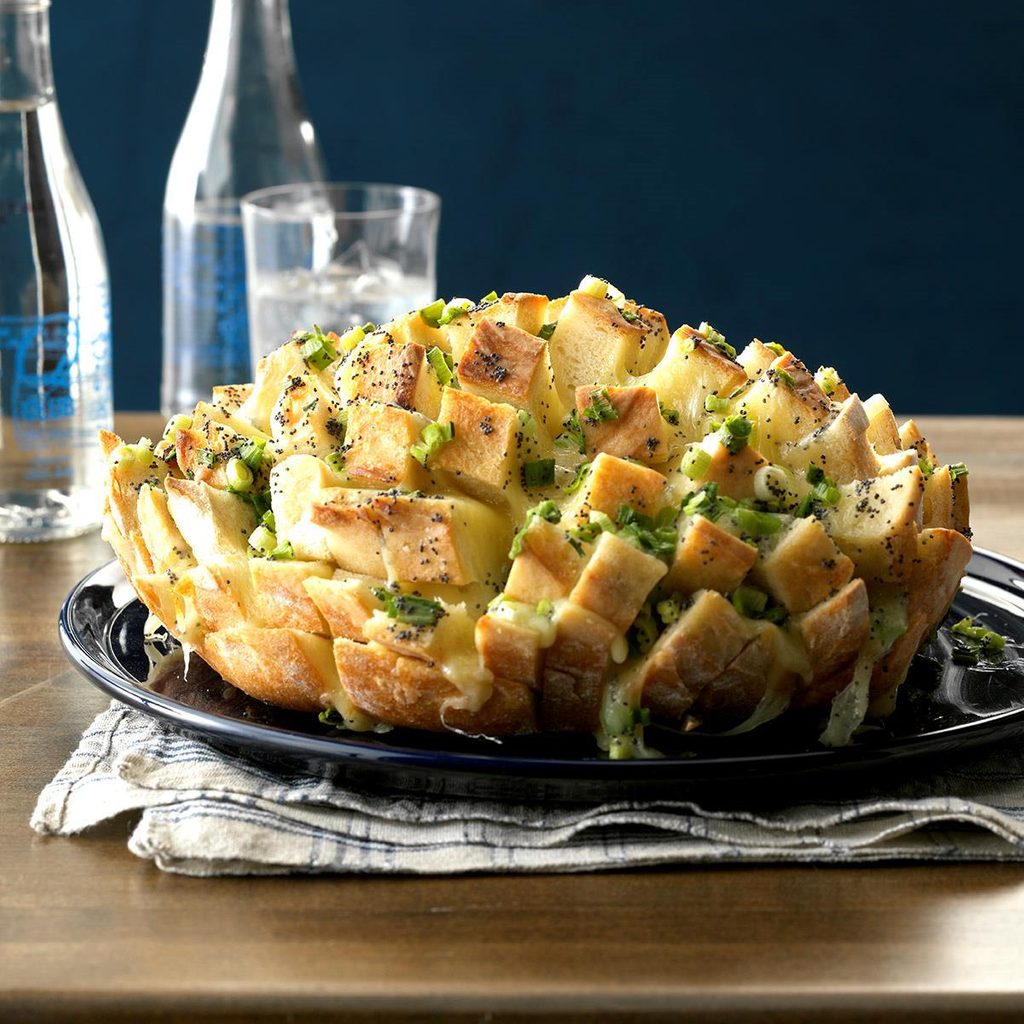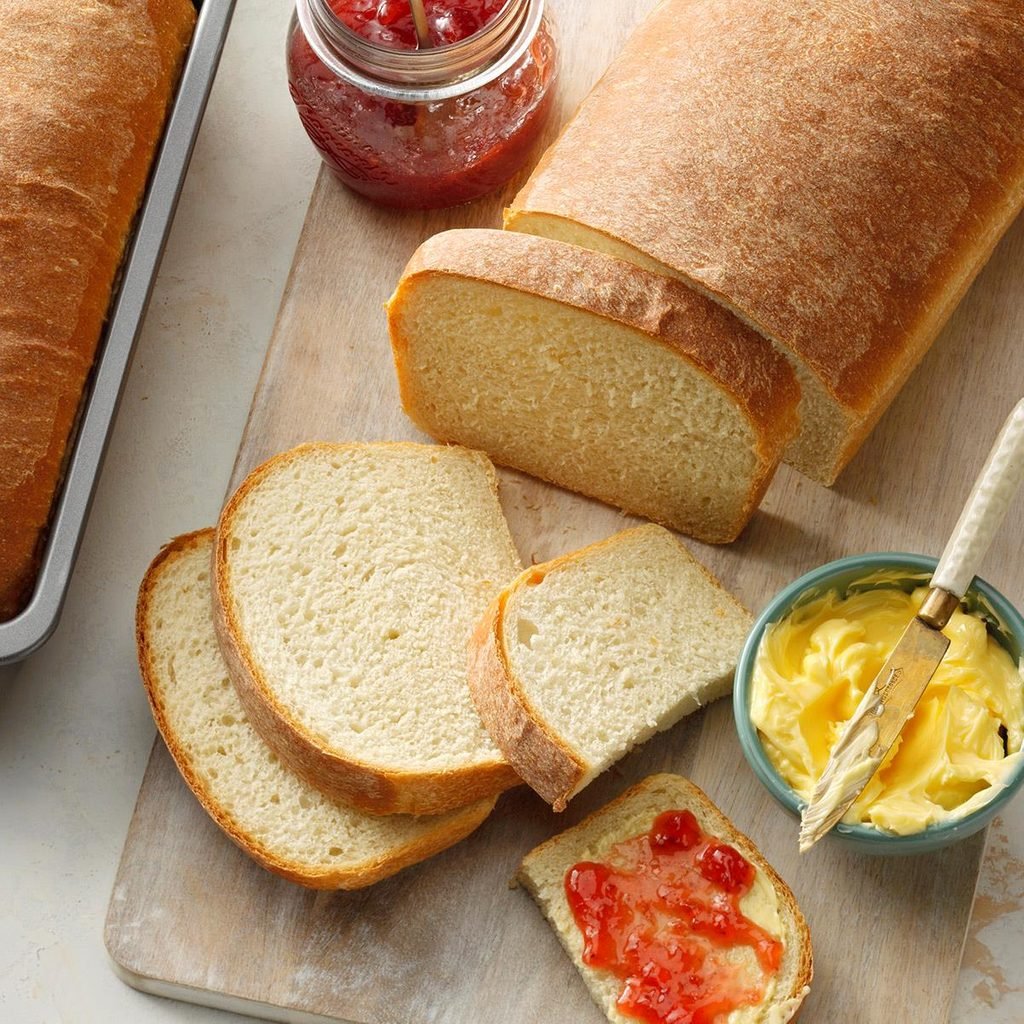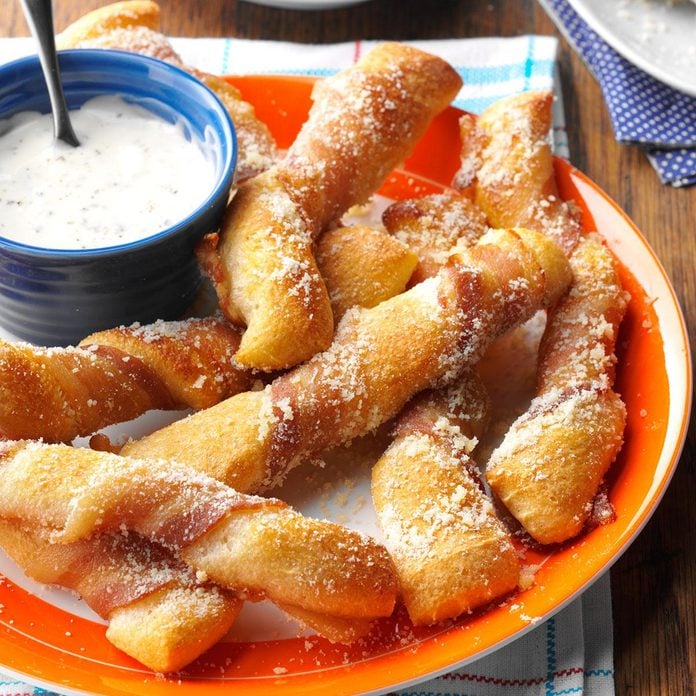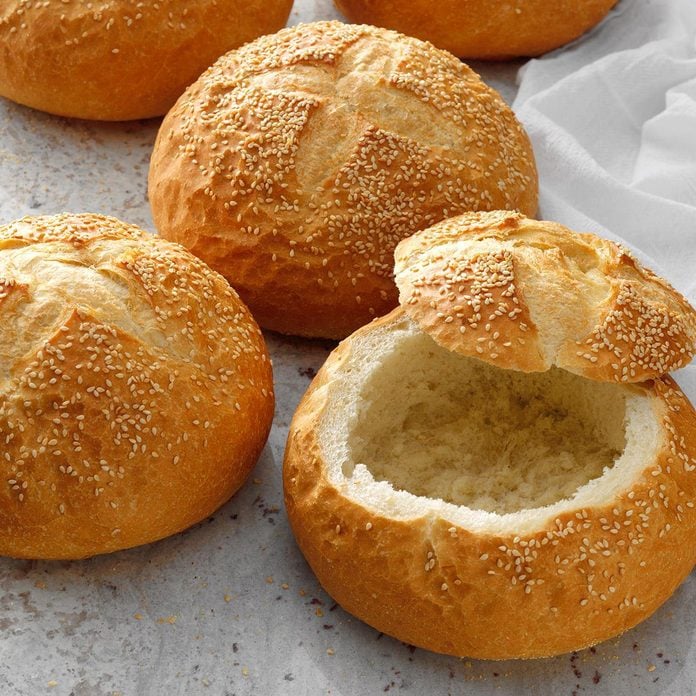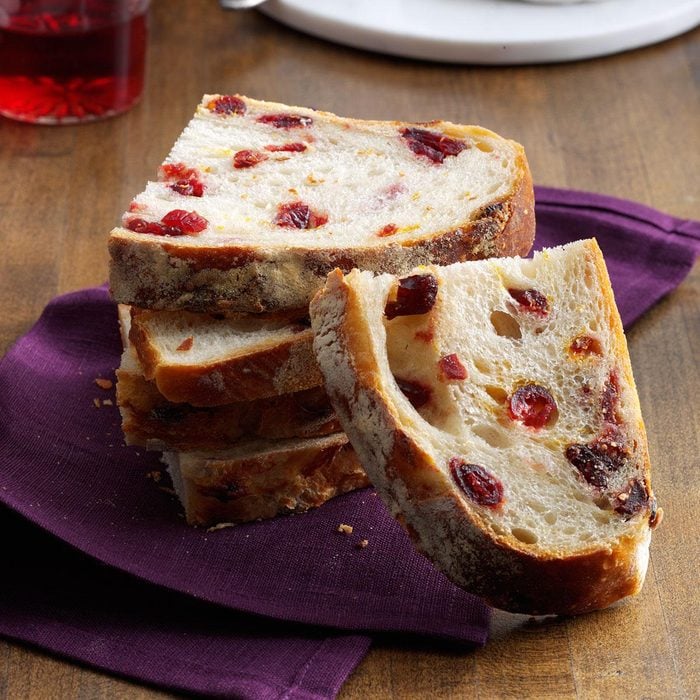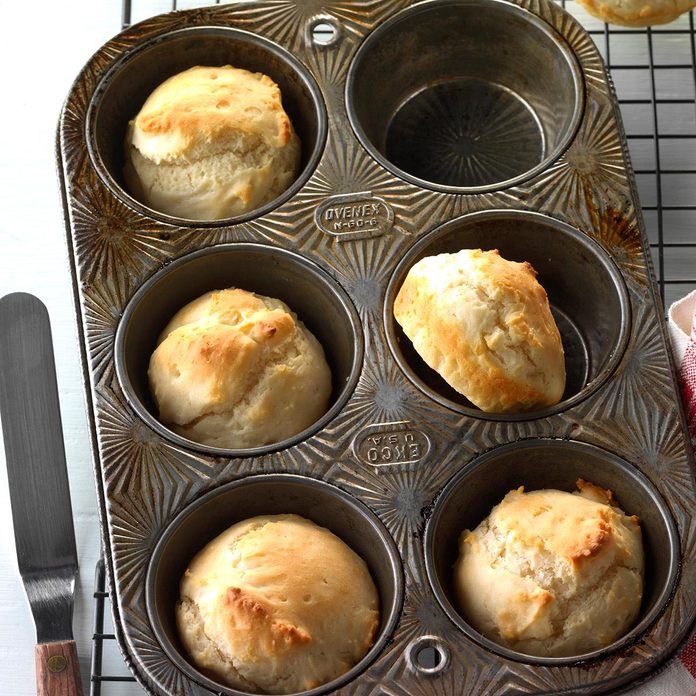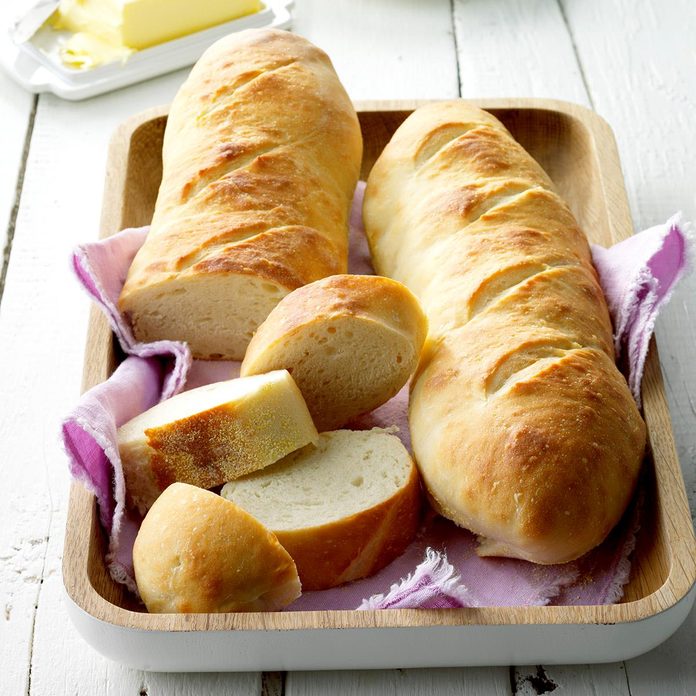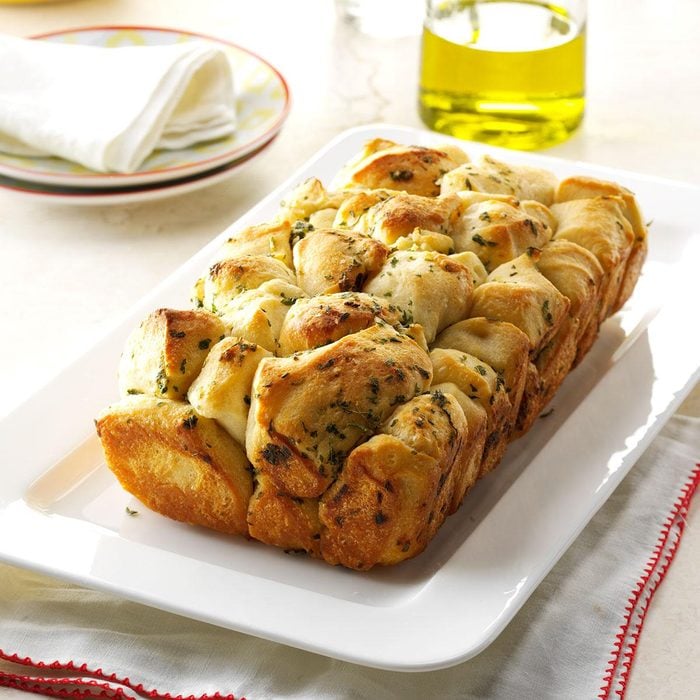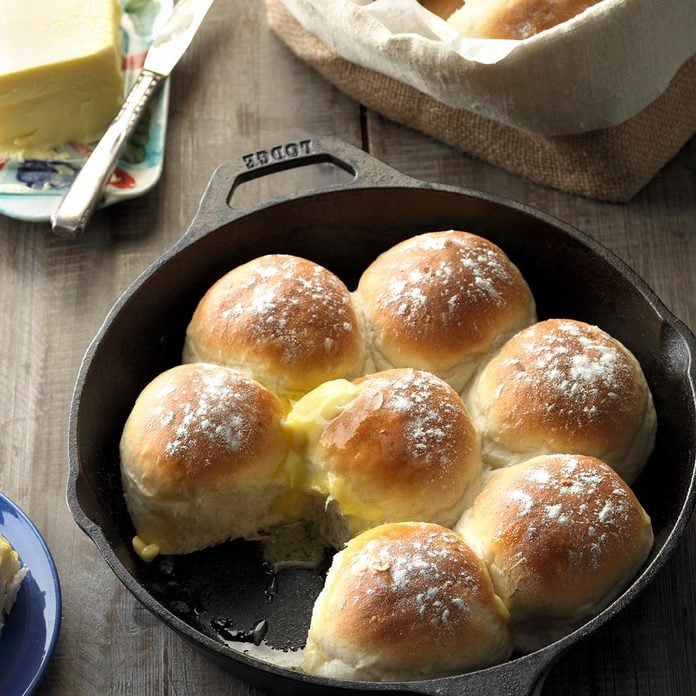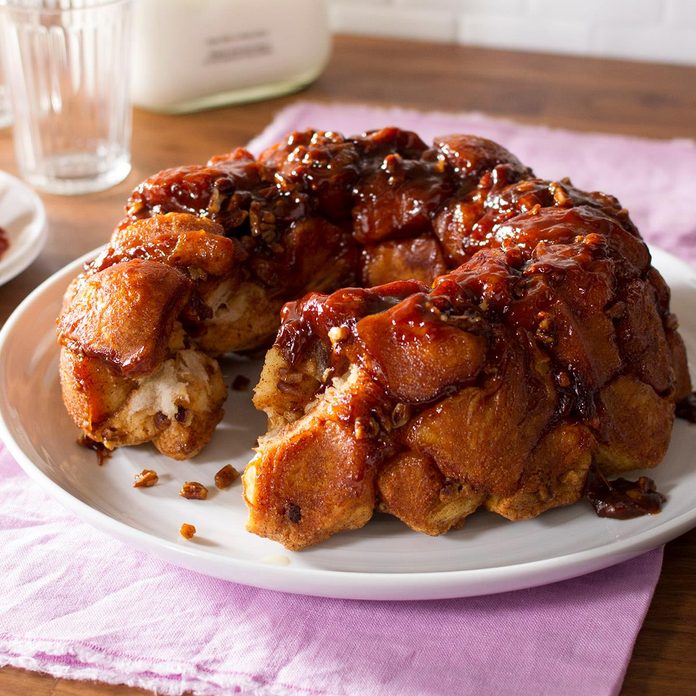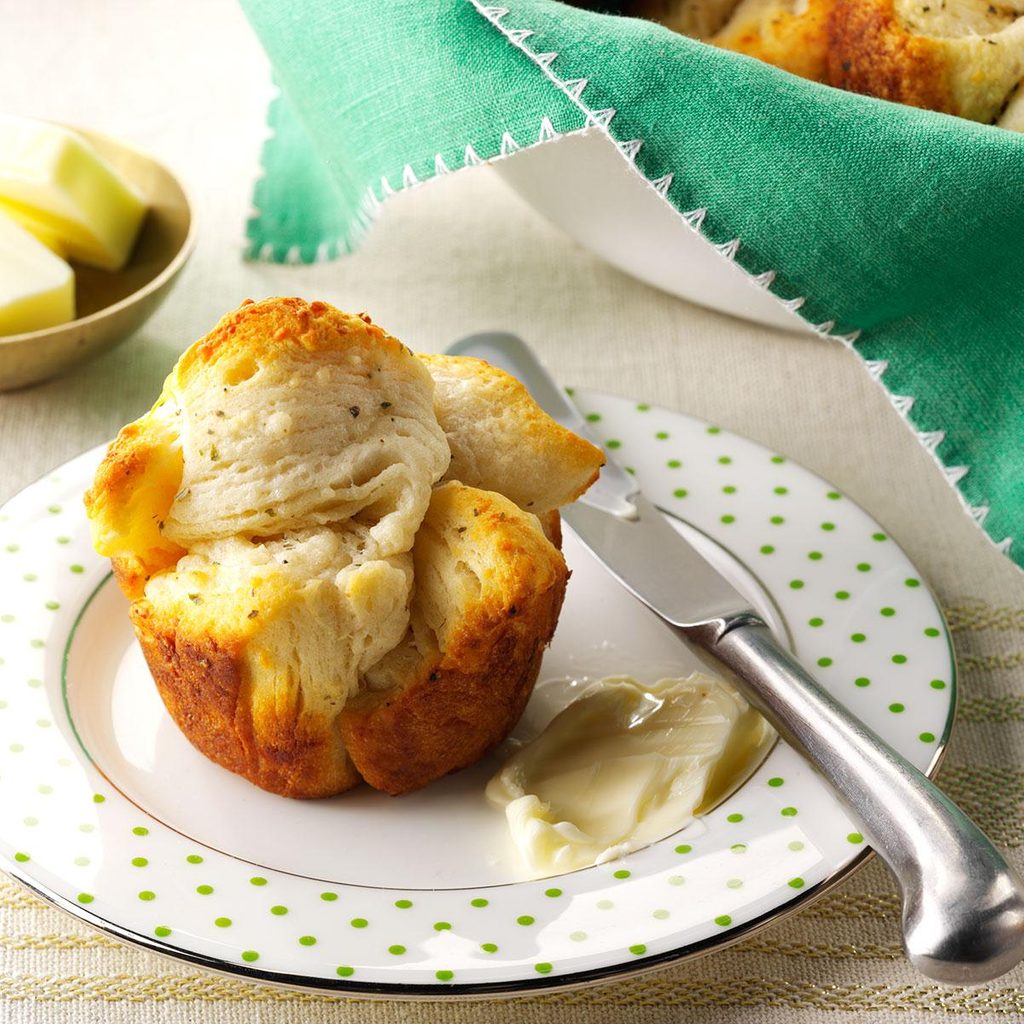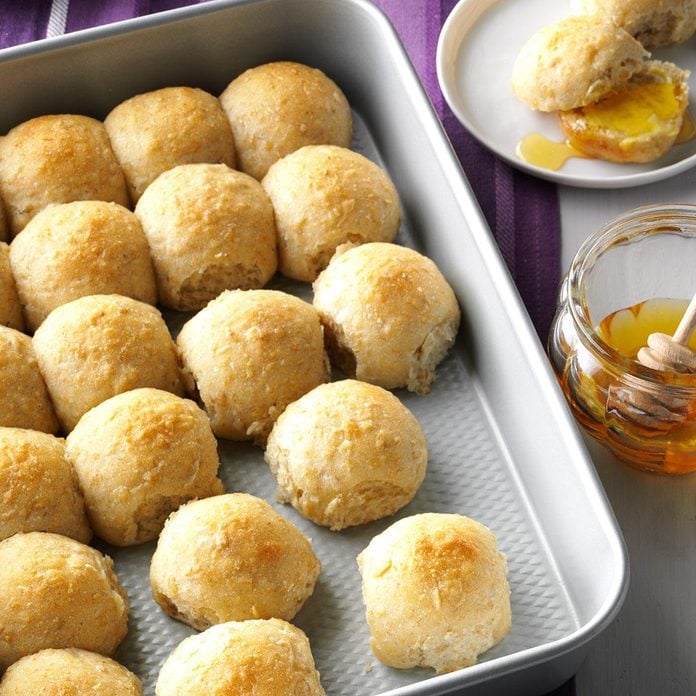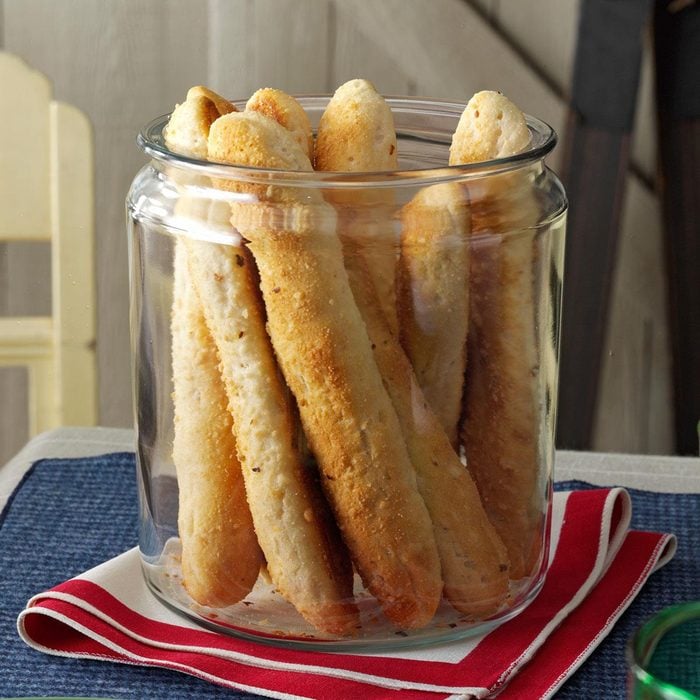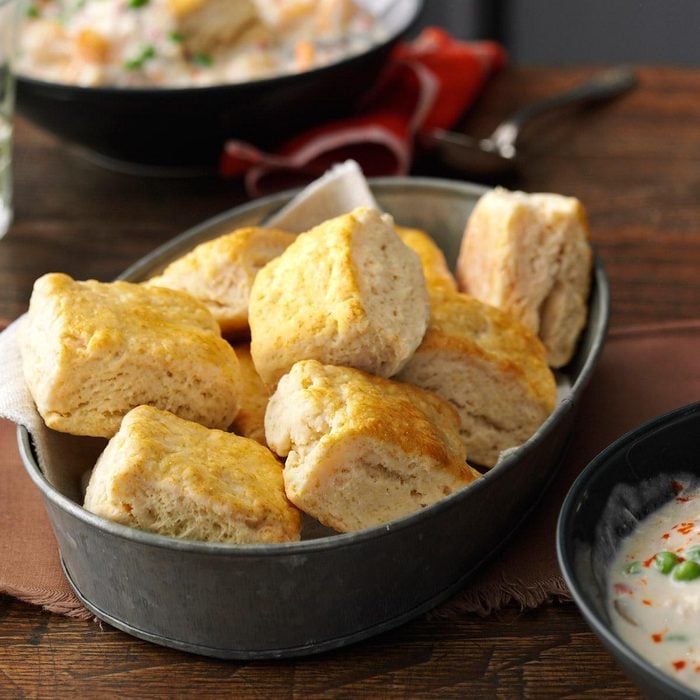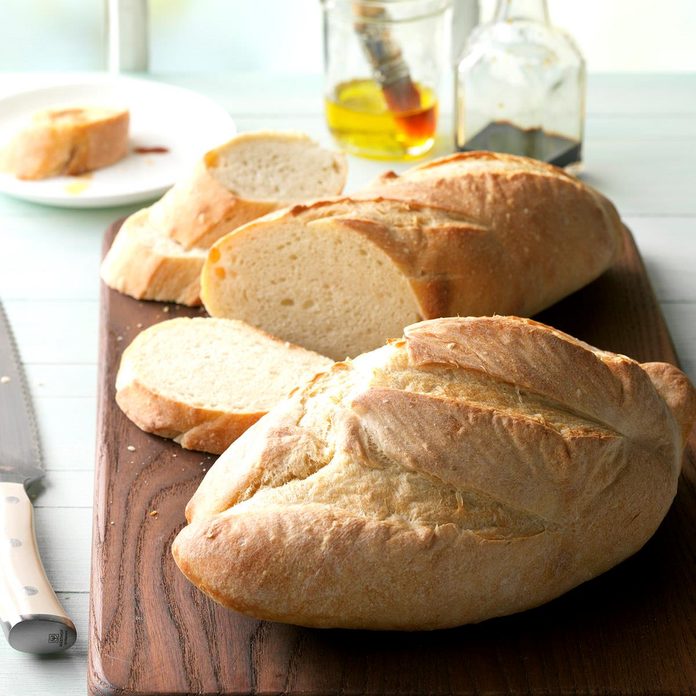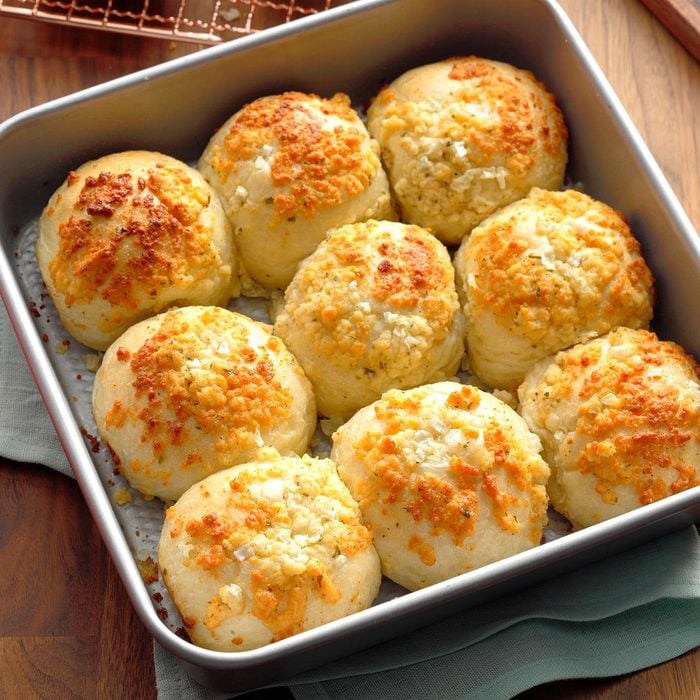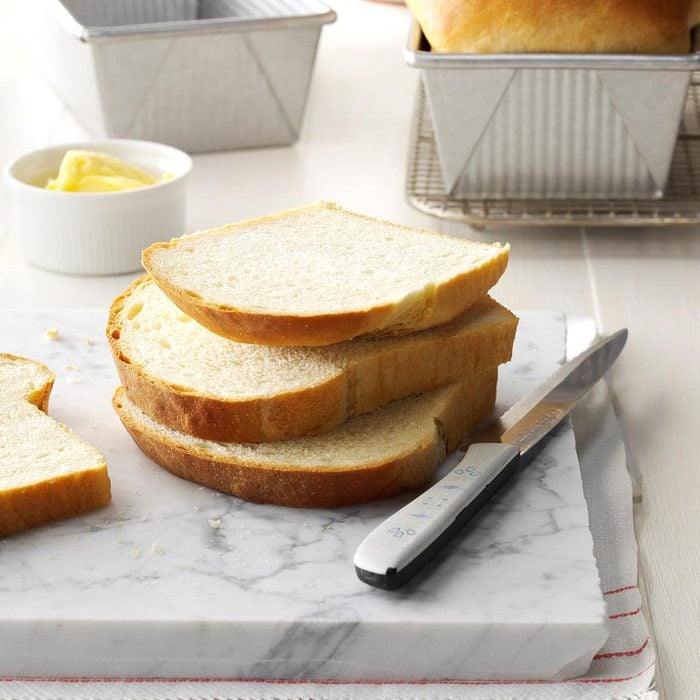ⓘ
Here’s the situation: You’ve had a full afternoon of baking fresh bread. You’ve put your heart and soul into proofing the dough, kneading properly and babysitting it to tender baked perfection. The last thing you want is for a loaf to go stale before you can share it with friends and family. Bread really only lasts two or three days before it will start to get stale—or even turn moldy.
When you need to make each loaf last as long as possible, turn to the freezer. Below, we’ll discuss how to freeze bread and how to thaw it to maintain its soft, airy texture.
When to Freeze Bread
If there was a bakery deal on bread and you got several loaves or if you made sourdough or buttery dinner rolls from scratch and ended up with way more than you planned on, you can freeze the bread right away to maintain its pillowy texture. Freshly baked bread should be completely cooled before going in the freezer.
If your bread has already started to turn stale, freezing it won’t necessarily stop it from going bad. When you take it out of the freezer, it will still be slightly stale. This is why we recommend freezing bread you’re not going to eat right away rather than waiting until the last minute.
How to Freeze Bread
Freezing food is a smart choice for many reasons. When you freeze bread correctly, you really can maintain its freshness. In fact, it can last for months.
Step 1: Prep your bread, sliced or whole
If baking, let your bread cool completely. This will prevent it from becoming soggy or moldy. Wrap each loaf tightly in plastic wrap. Then wrap it in foil or freezer paper. The double-wrap is your secret weapon for freshness.
Test Kitchen Tip: Slice your bread before freezing so you can remove only the slices you’d like to use each time, rather than having to thaw the entire loaf. You can wrap a few slices together rather than individually wrapping every slice.
Step 2: Pop bread in the freezer
Always write the date on your bread before freezing. It’s best to use frozen bread within six months. Any longer and you’ll find the bread may have freezer burn.
Here are more foods that freeze well—including a handful of surprises.
How to Thaw Frozen Bread
Frozen bread is especially great to use for making toast. You can simply grab frozen slices from the freezer and pop them in the toaster. You may have to turn your toaster setting up a little higher than if you were toasting regular bread.
You can also take out the frozen bread you’d like to use and thaw it overnight right on the countertop. It should be ready for breakfast the next day!
If you find your frozen bread has overstayed its time in the freezer, don’t worry. Bread that’s a bit dry or stale makes for great French toast, bread pudding and croutons. Don’t let it go to waste!
How to Heat Up Bread from Frozen
No time for thawing? Reheat your bread directly from frozen. Set your oven between 325° and 350°F and pop in the frozen loaf. Smaller loaves might take around 20 minutes, where larger loaves could take nearly 40 minutes.
To heat up slices of bread from frozen, warm them in the oven for about five minutes.
How to Avoid Freezer Burn
Even with a double wrap, freezer burn can still sneak into your bread. Although it’s safe to eat freezer-burned food, it will lack moisture and flavor. Making sure your loaves or slices are at room temperature (or even chilled in the fridge) will be the first step for preventing freezer burn. Keeping your freezer about three-quarters full also keeps food fresh. A freezer that’s too full won’t have enough room for freezing air to circulate.
5-Ingredient Bread Recipes to Make Right Now
Crusty Homemade Bread
Crackling homemade bread makes an average day extraordinary. Enjoy this beautiful crusty bread recipe as is, or stir in a few favorites like cheese, garlic, herbs and dried fruits. —Megumi Garcia, Milwaukee, Wisconsin
Go to Recipe
Country White BreadAnytime is the right time for a comforting slice of homemade bread. These loaves are especially nice since the crust stays so tender. This white bread recipe is my husband Nick's favorite. He makes most of the bread at our house. —Joanne Shew Chuk, St. Benedict, Saskatchewan
Feather-Light BiscuitsI usually used a glass as a cutter so the biscuits are bigger than average size, and I always baked some extras to send home with the kids. They liked to split them and fill them with cheese or peanut butter and strawberry jam. —Eleanore Hill, Fresno, California
Big-Batch Dinner RollsHere’s a home-baked roll you can make for every holiday. Just mix, knead, shape and par-bake, then pop 'em in the freezer. They’re ready to finish baking when guests are on their way. —Mary Jane Henderson, Salem, New Jersey
Pull-Apart Bacon BreadI stumbled across this recipe while looking for something different to take to a brunch. Boy, am I glad I did! Everyone asked for the recipe and was surprised it called for only five ingredients. It's the perfect treat to bake for an informal get-together. —Traci Collins, Cheyenne, Wyoming
Hurry-Up BiscuitsWhen I was young, my mom would make these biscuits with fresh cream she got from a local farmer. I don't go to those lengths, but the family recipe is still a real treat. —Beverly Sprague, Baltimore, Maryland
Pull-Apart Caramel Coffee CakeThe first time I made this delightful breakfast treat for a brunch party, it was a huge hit. Now I get requests every time family or friends do anything around the breakfast hour! I always keep the four simple ingredients on hand. —Jaime Keeling, Keizer, Oregon
Garlic-Cheese Crescent RollsUpgrade your basic crescent roll recipe! Here's a recipe that just couldn't be much quicker or easier and is sure to add a nice touch to any dinner. The garlic and Parmesan flavors really come through. Enjoy! —Lori Abad, East Haven, Connecticut
Savory Party BreadIt's impossible to stop nibbling on warm pieces of this cheesy, oniony bread. The sliced loaf fans out for a fun presentation. It's one of the best savory appetizers I've found. —Kay Daly, Raleigh, North Carolina
Basic Homemade BreadIf you'd like to learn how to bake bread, here's a wonderful place to start. This easy white bread bakes up deliciously golden brown. There's nothing like the homemade aroma wafting through my kitchen as it bakes. —Sandra Anderson, New York, New York
Bacon-Wrapped BreadsticksI first tried these breadsticks at a restaurant and the owner was kind enough to share the recipe. When I made them for my family, not a crumb was left and everyone was asking for more! —Wendy Domres, West Bend, Wisconsin
Quick and Easy Bread BowlsImpress all your friends by serving cream soups or dips with this bread bowl recipes. It's one of the most popular recipes on my blog, yammiesnoshery.com. —Rachel Heidenreich, Marshall, Michigan
Rustic Cranberry & Orange BreadStudded with cranberries, slices of pretty bread make the perfect holiday brunch treat. —Megumi Garcia, Milwaukee, Wisconsin
No-Fuss RollsWith only 4 ingredients, these delicious rolls are ready in no time. They're fantastic with herb butter or jam. —Glenda Trail, Manchester, Tennessee
Bacon Crescent RollsThe mouthwatering aroma of warm bacon from these three-ingredient rolls will draw folks to the table. These are fun for children to prepare and such a cinch to assemble with ready-cooked bacon. —Jane Nearing, Indianapolis, Indiana
French LoavesMy kids love to help me make this delicious bread recipe. It's quite easy, and they enjoy the fact that they can be eating fresh bread in about two hours! —Denise Boutin, Grand Isle, Vermont
Pull-Apart Garlic BreadPeople go wild over this golden, garlicky loaf whenever I serve it. There’s intense flavor in every bite. —Carol Shields, Summerville, Pennsylvania
Homemade Buttermilk BiscuitsThe recipe for these four-ingredient homemade buttermilk biscuits has been handed down for many generations. —Fran Thompson, Tarboro, North Carolina
Potato Pan RollsMy family loves these rolls and requests them often. They don't take long to make because you use quick-rise yeast. —Connie Storckman, Evanston, Wyoming
Monkey BreadBoth of my boys really enjoyed helping me make this butterscotch monkey bread when they were young. It seemed to taste twice as good when they helped fix it. It's one of our favorites for breakfast or as a snack. —Carol Allen, McLeansboro, Illinois
Monkey Bread BiscuitsI came up with an easy, savory—instead of sweet—dinner version of monkey bread featuring garlic and Italian seasoning. —Dana Johnson, Scottsdale, Arizona
Scottish Oatmeal RollsMy family likes rolls that can hold up to scooping gravies, sauces and more. This recipe is a favorite. The oatmeal in the dough gives it a Scottish touch. —Peggy Goodrich, Enid, Oklahoma
Savory Biscuit-BreadsticksI love to experiment in the kitchen with simple ingredients like refrigerated biscuits. The results are usually a big hit—these super fast breadsticks are an example. —Billy Hensley, Mount Carmel, Tennessee
Grandma's BiscuitsHomemade biscuits add a warm and comforting touch to any meal. My grandmother makes these tender biscuits to go with her seafood chowder. —Melissa Obernesser, Utica, New York
Mom's Italian BreadI think Mom used to bake at least four of these tender loaves at once, and they never lasted long. She served the bread with every Italian meal. I love it toasted too. —Linda Harrington, Windham, New Hampshire
Mom's Buttermilk BiscuitsThese fluffy buttermilk biscuits are so tasty slathered with butter or used to mop up every last drop of gravy off your plate. I can still see Mom pulling these tender gems out of the oven. —Vera Reid, Laramie, Wyoming
Parmesan-Ranch Pan RollsMom taught me this easy recipe, which is perfect for feeding a crowd. There is never a crumb left over. Mom used her own bread dough, but using frozen dough is my shortcut. I make a wheat bread dough version with poppy and sesame seeds that’s popular, too. —Trisha Kruse, Eagle, Idaho
Home-Style Yeast BreadEveryone likes the tender texture and slightly sweet taste of this homemade bread. When I'm in the mood to bake, I usually double the recipe and share loaves with friends. The dough also makes lovely rolls.
-Launa Shoemaker, Landrum, South Carolina
Easy Parmesan BiscuitsThis recipe is simple but a delicious addition to any meal. The children love to dip the ready-made biscuits in butter and coat it with the cheese. Warm from the oven, one biscuit per person usually isn’t enough. —Linda Becker, Olympia, Washington
Extra Quick Yeast RollsMaking homemade rolls usually takes a lot of ingredients and time, but this recipe makes it so simple. The rolls come together quickly and freeze well too.—Eleanor Paine, Junction City, Oregon

